
by Dharam CW2 | Jul 11, 2024 | General
Many PMOs recognize digitalization as an essential step in their organizations’ journey toward project management maturity. As a result, the Project Management Office (PMO) must shift its focus from project governance and delivery to supporting digital transformation.
To keep up with the evolving demands and needs of an increasingly digitized world, digital transformation has to be drifted through organizations of all shapes and sizes. However, many realize that successful digital transformation entails changing foundational cultures, structures, and methodologies and implementing digital tools. As organizations expand to accommodate this change, the PMO’s role within those organizations must change to do the same.
Digitalizing PMOs
Digital transformation is a familiar idea. Businesses constantly look for new ways to adapt and leverage emerging technologies to improve their business processes. Before the pandemic, PTC research found that 70% of organizations had or were working on a digital transformation strategy.
The PMO is crucial to achieving an organization’s strategic goals. If PMOs are to be an organization’s strategic drivers, they must expand their role beyond its traditional boundaries. They must assume their strategic role by leading change and capitalizing on opportunities in the digital space. PMOs must be at the forefront of emerging technologies, constantly evaluating opportunities and implementing new strategies. The recent pandemic and sudden shift to remote work have highlighted the challenges of developing community and culture through digital spaces. Here are some ways that PMOs can help the organization drive into digital transformation.
Five ways the PMO drives digital transformation
- PMOs can inspire and encourage change.
- PMOs act as the strategic arm
- PMOs provide support and insight.
- PMOs properly manage transformations.
- PMOs enable successful digital adoption.
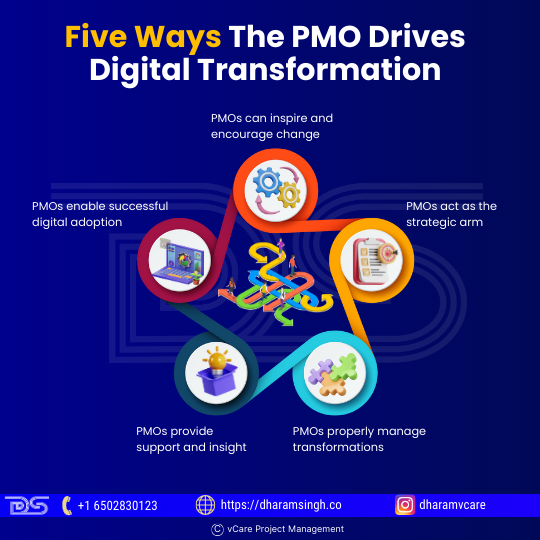
Five ways the PMO drives digital transformation
How PMOs can aid an organization’s digital transformation
The nature, ownership, and stakeholders of IT strategy, governance, and management activities are changing dramatically due to digitization. According to Gartner research, 87% of organizations prioritize digitization. Furthermore, technology is now responsible for 77% of an executive’s top priorities.
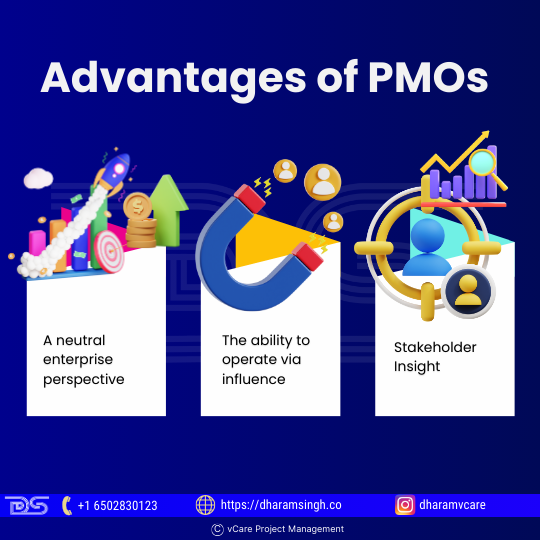
Advantages of PMOs
As a result, PMOs are under intense pressure to transform. Unfortunately, their project, program, and portfolio management processes are designed for predictability and consistency rather than the speed and flexibility required to meet digital demand. Most PMOs have three significant advantages, which are either inherent due to the PMO’s role or location or have been developed through previous experience:
- A neutral enterprise perspective: As capital allocation and portfolio prioritization approaches change to enable the funding flexibility required for digital work, the PMO’s impartial, enterprise-wide perspective on demand, investment, and resource utilization is hugely valuable.
- The ability to operate via influence: As organizational boundaries become more fluid and who “owns” project management becomes less certain, influencing and enabling others, rather than direct ownership, becomes even more critical.
- Stakeholder insight: As digitization spreads throughout the business and accounts for an increasing proportion of work, there are more first-time stakeholders and greater stakeholder complexity for each piece of work. Understanding the preferences of these various stakeholders and experiencing synthesizing their feedback becomes critical in delivering results from digital work.
Elements Driving Digitalization
Traditional businesses worldwide have long recognized that digital transformation is the key to thriving in a fast-paced world. Digital transformation involves integrating digital technology into all aspects of a business. It fundamentally alters how businesses operate and provide value to customers. It increases efficiency, transparency, customer experience, employee engagement, and culture and saves time and money. Modern digital tools have elevated the project management process to new heights.
The following are the seven critical elements of a successful strategic digital transformation framework:

Elements Driving Digitalization
- Strategy and Leadership
An effective game plan is an obvious but frequently overlooked component of a digital transformation strategy. Instead, what matters is “how and who” formulates the strategy. A basic strategy and the appropriate technologies can help you digitize or digitalize your business, but transformation requires the right mindset and guidance. As a result, strategy combined with the right leadership is the first and most important component of an effective digital transformation strategy.
Visionary leadership combined with the appropriate digital transformation strategy can achieve a better, smoother, more cost-effective, and time-effective plan for your business’s transformation.
- Culture Change and Communication
Prepare for a massive cultural shift. A company’s clients and employees are typically resistant to significant changes, making implementing any transformation challenging. However, any successful digital transformation program must include culture. Therefore, giving your employees advanced training in good communication will be advantageous.
- Discuss the digital transformation strategy with your employees and how it will benefit all stakeholders.
- Conduct training sessions with your employees ahead of time to prepare them.
- You can prepare your employees by demonstrating the importance of aligning culture with new initiatives.
- Optimization of the Process
Every business has various processes and operations that can be improved to make workflows more efficient and effective. As a result, when developing a digital transformation strategy, consider business process optimization.
The strategy must optimize the business process while meeting customer and internal team goals. The digital transformation strategy must cover all interconnected business processes to achieve maximum output.
- Data Curation
One of the primary reasons for implementing digital transformation is to eliminate your business’s pain points for your team and your customers. But how will you know what these aches and pains are?
Data analysis and integration can assist you in locating them. People frequently choose their preferred technologies when developing transformation strategies before analyzing their data. Data analysis and the dissemination of its results can assist the team in identifying the best solutions to problems, leading to developing a better digital transformation strategy and making the most of the transformation process.
- Technologies to be Implemented
Finding the right technologies for your business is one of the most crucial steps in creating a digital transformation strategy. Introducing new technologies into your business will necessitate a significant financial investment, so it must be done correctly to avoid the need for additional funds. Any impactful strategy for digital transformation will always include options and budget constraints to help you make the best decision possible. Whether dealing with legacy system updates, application modernization, or implementing entirely new digital systems, you must find the best technology.
Some cutting-edge technologies that must be incorporated into your digital transformation strategy are:
- Cloud and Distributed Platforms
- Data Analytics & Artificial Intelligence
- Digital Experience and Digital Reality
- Team Structure
Harvard Business Review says digital transformation is about people, not tools. As a result, team structure is a determining factor in delivering results by the Digital Transformation Strategy.
The scope of the project should determine the team structure. The following components should be included in the digital transformation initiative:
- Pack of Leaders
- Business Experts
- The cast of Coders and Designers
- Results – How to Measure the Success of Your Digital Transformation Strategy
Your company’s digital transformation outcomes will greatly influence how you lay out your strategy. The outcomes will always vary depending on the practices and technologies used. Your digital transformation strategy’s success is dependent on its agility. First, of course, you must stick to your detailed strategy, but you must also be open to changes if things don’t go as planned.
By developing an effective, clear, and robust digital transformation strategy, you can ensure your company’s digital transformation goes as smoothly as possible. A digital transformation strategy is similar to a personalized road map for significant changes in your business operations. However, it requires significant financial investment, time, and technical expertise.
From Traditional PMO to Agile
Traditionally, PMOs have focused on maintaining project control to complete projects on time and within budget. However, in today’s increasingly complex and changing competitive environments, agile management is gradually displacing more traditional management methods; PMOs that remain anchored in this “classic” management model risk disappearing if they do not set the following objectives:

Transforming the PMO
- Empowering PMOs in the organization’s value streams
Organizations are now focusing on the value they provide to their customers and how different areas and departments contribute to that value creation. Suppose PMOs stick to their command and control model to ensure that projects are delivered on time and within budget. Their contribution to the organization’s value streams will be marginal, and senior management will view them as an unnecessary expense for the company.
- Collaboration and agility at all levels of business
Silo-based organizational models need to gain ground in agile and collaborative environments. As a result, PMOs must evolve beyond simply providing Project Managers with the tools they need to complete the organization’s projects.
On the one hand, PMOs must maintain open lines of communication with senior management to align the Project Portfolio with the organization’s goals. On the other hand, it serves as a reference point for stakeholders and project work teams, providing real-time information on project status and support at all levels for proper project implementation.
- Towards Agile Project Portfolio Management
Change is the norm in this new competitive environment, with highly volatile markets demanding businesses to bring products and services to market as quickly as possible. As a result, company objectives can shift dramatically quickly, necessitating a rethinking of project portfolio prioritization. This phase is where PMOs must adapt to this new environment and manage key project management issues like prioritization, resource management, budgets, or delivery dates in an agile manner, as well as learn to react to changes in their project portfolios in an agile and efficient way without losing sight of the organization’s objectives.
Post-pandemic challenges for PMO
If PMOs establish these three goals, they might avoid extinction because senior management will no longer recognize their value to the organization.
It will be challenging, and the Project Management Office will face several challenges as it adjusts to the new reality. In particular, the PMO will face some challenges for its role to be perceived as critical to the organization’s value streams:
- Coincide the project portfolio with the overall strategy of the organization.
- Resource management is a real challenge for PMOs.
- Responsiveness to changes in the project portfolio.
- Fluent in communication with the organization’s senior management.
- Embrace Agile Leadership.
- Standardization of processes and workflows.
- Renewal of project portfolio management tools.
Mitigating mediocre implementation of Programs
There are always equal chances of success and failure in programs/projects. As a result, it is critical to understand how to avoid and overcome project failure. There are numerous reasons why a PMO succeeds or fails. Still, the most common reasons for failure are often not related to process or technology issues but to “people issues” in an organization.

How to avoid PMO Failures
Here are the most common reasons why PMOs fail:
- Adopt the Proactive Approach
After many years, project managers gain the skills and knowledge needed for the current project from their experience. As a result, an experienced and highly skilled project manager is equipped to deal with customers and avoid project failure. If you are new to project management, consult a professional mentor to discuss your concerns and receive appropriate advice based on their experience. If you have project management experience, you should apply your skills and knowledge to the project and be aware of the common causes of project failure.
- Plan the Project’s Strategy and Project Implementation
The most important stage of any project is planning. Most of the time, proper attention is not given during the planning stage. If you plan properly, you will increase the project’s chances of success. After scheduling your project, use the Project Management Life Cycle to begin project execution.
- Manage the Project Goals
It would be best to document the project’s decisions, actions, and outcomes before beginning, during, and after completion. To avoid project failure, it is always necessary to ensure project deliverables and work appropriately with customer requirements. Never rely on understanding, verbal agreements, or memory for project implementation decisions.
- Avoid Unrealistic Expectations
Always set realistic expectations and time frames with stakeholders, team members, or customers to meet your project’s deadline. This move is related to the proper project start but goes deeper until completion. To avoid project failure, realistic expectations for team members must be set based on their capabilities. It would help if you encouraged them to work enthusiastically and push themselves beyond their comfort zone to meet the project’s objectives.
- Track Project’s Progress
Project planning will assist you in determining where your project should be now. In addition, you should know how much of the work has been completed, whether your work is on schedule, proceeding as planned, and so on. These three parameters govern any project and are critical in preventing project failure.
- Identify Risk Factors
The best way to avoid risk is to identify, analyze, and respond to risk factors. So, if you identify the risks and potential issues early on in the project, your project team can avoid them with appropriate actions. In addition, identifying and resolving risk factors will assist the project manager in lowering the likelihood of project failure. As a result, you can perform proper risk management and avoid project failure.
- Use Correct Methodology
One of the most important decisions a project manager must make is the methodology to use for project management. What you choose will have a significant impact on teamwork. However, each methodology has advantages and disadvantages depending on the project type and scope. Here are some top project management methodologies to consider.
- Waterfall method
- Agile/Scrum
- Hybrid approach
- Critical Chain Project Management
- Integrated Project Management Technique
- Critical Path Method (CPM)
All project management methodologies cannot be regarded as the best for all projects, so one can understand the project requirements and select the best option. The correct methodology will assist you in achieving the project goal within the specified time frame, thereby avoiding project failure.
- Focus on Stakeholder’s Requirements
As we all know, a project will only succeed if it meets its objectives and exceeds the expectations of its stakeholders. Therefore, to be successful in project management, all team members must be actively involved in the project and committed to its success. Devoting entails writing down the following stages:
- The competent initiative assists the team in implementing various tasks throughout the project life cycle.
- Adequate funding ensures the organization’s cost-generating department has enough money to fund the projects.
Final Thoughts
In today’s fast-paced and dynamic business environment, agile working methods might provide significant added value that should be noticed.
Digitalization is making projects more complex. As a result, the use of technology to manage projects is growing, and project teams must be cross-functional to achieve project goals. Agile project management provides an opportunity to respond quickly to new requirements and be more visible in the market. For organizations that use a traditional approach to project management, the transition to an agile PMO is part of their digital and agile transformation.
It should be noted that this is not an evaluation of “better” or “worse” methods. When used correctly, each project management method can reveal its strengths. It is critical to think about, use, and improve them.
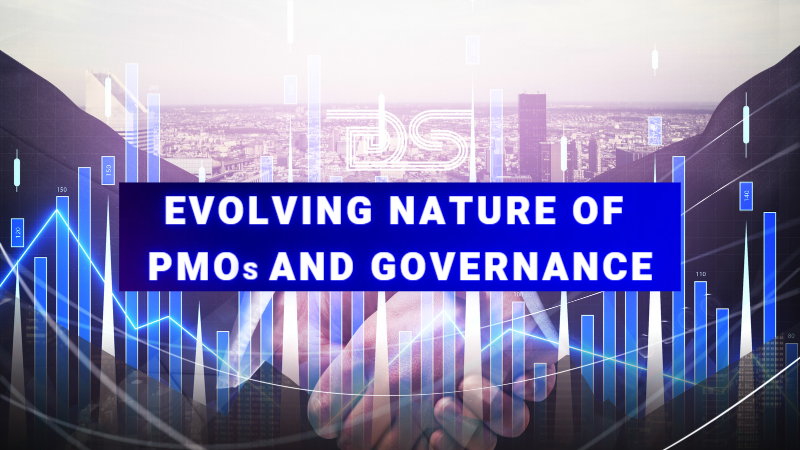
by DharamCW | Sep 8, 2023 | General
From a strategic standpoint, the PMO is critical in project management. Unlike project management, which focuses on the day-to-day operations of a project team, the PMO serves as a framework for project managers, offering PMO methodologies and templates for managing programs inside an organization. In addition, it manages the project management resources required to sustain and deliver projects.
Project management offices (PMOs) are evolving from purely administrative to strategic roles. They are rethinking PMO operations, adopting new technology, and implementing new project management operating models. The evolved PMO is a new PMO concept that is gaining traction. A creative, strategic, and adaptive PMO designed to help modern organizations deal with the volatility of today’s market conditions.

Functions Of A Project Management Office
Functions of a Project Management Office (PMO)
A project management office (PMO) is the foundation of a successful project management strategy in a business. It is a function that gives decision-support information but does not make choices.
A project management office (PMO) supports project delivery mechanisms by ensuring that all business change in a company is controlled. PMOs perform various duties, and their services depend on the department’s maturity and the PMO personnel’s talents. At its most basic, the PMO assists project management teams in making funding, prioritizing, and resource choices. The most mature PMOs provide the following:
1. Governance: The PMO ensures that the appropriate individuals make the correct decisions based on pertinent information. Audits or peer reviews, designing project and program frameworks, and maintaining accountability at all levels are all part of the governance role.
2. Transparency: The PMO delivers information as a source of truth. Information should be relevant and accurate to promote good decision-making and be presented to individuals understandably.
3. Reusability: The PMO fosters knowledge sharing. This aspect prevents project teams from reinventing the wheel and positions the PMO as the hub for lessons learned, templates, and best practices.
4. Delivery support: By minimizing bureaucracy and offering training, coaching, mentoring, and quality assurance, the PMO makes it easier for project teams to accomplish their duties.
5. Traceability: The PMO manages paperwork, project history, and organizational knowledge.
In reality, most PMOs will do various tasks and offer services tailored to the organization’s requirements.
How Business Agility Drives A Shift In Focus For Today’s PMOs
Forward-thinking companies are fast learning that “simply getting the job done” will not equip them for long-term company success. To be successful in business today, firms must provide products and services that satisfy their clients while constantly innovating to grow their markets.
Historically, PMOs were responsible for managing tactical operations that supported project development and implementation. Today’s Corporate leaders recognize that to stay ahead of the market; they need to exploit new possibilities while limiting unanticipated risks – this necessitates a new approach to planning, building, and delivery. Maintaining consistent levels of project success involves more than an organized strategy; it demands a company’s collective attitude to accept required disciplines while staying flexible enough to respond to changes in their business.
1. A major project fails — badly: When an expensive, strategic initiative fails in a competitive market, it compels a company to rethink its strategy. A third of the organizations polled cited a big failure as the impetus for shifting emphasis.
2. A project goes over budget: An underlying driver is cost reduction; project success at higher-than-expected costs decreases profitability and damages customer relationships.
3. A PMO aids a strategic project to succeed: Success, on the other hand, is a catalyst for change. Therefore, the following important reason for building a strategic PMO would be to capitalize on the momentum produced by the successful project.
4. Market competition forces stronger disciplines: Maintaining market share and growing at a controllable rate encouraged larger firms to create consistency to innovate. The capacity to pivot and explore possibilities prompted smaller businesses to establish a strategic PMO.
Key Factors to a Successful PMO Transformation
Established businesses and fast-growing firms are both adapting to changing business environments brought on by competition, acquisitions, developing technology, and new risks. As a result, the importance of alignment, built-in quality, transparency, and the capacity to execute across various project endeavors has never been greater. Innovative design thinking, continuous delivery, excellent quality, and a never-ending drive for improvement are some of the essential characteristics of a modern-day PMO. Here are some causes driving PMO evolution and the seven elements required to turn a typical PMO into a transformation management office (TMO).
Drivers behind the PMO Evolution
Due to increased external business environment constraints, businesses must achieve rapid and substantial value from their projects and initiatives. This aspect means shorter delivery cycles, the adoption of developing technologies, and regularly changed priorities for the PMO. To achieve this transition, the PMO must move its focus from project execution technique to value-driven business results. Change drivers are often aligned with three fundamental needs:

Drivers behind the PMO Evolution
1. Capacity and skills:
- Specific domain areas of technical expertise required
- Extra capacity required
2. Rapid Execution:
- Organizations require rapid execution to address immediate concerns
- No time to plan, but need to execute now to meet deadlines (e.g., regulatory compliance dates)
3. Innovation:
- Legacy project management no longer meets expectations
- Value focus, agility, quality, and continuous improvement are required

Transformation Management Office Critical Factors
Critical Factors to Consider
1. Leadership: TMO core values of alignment, built-in quality, transparency, and program execution must be completely embraced by leaders. They must adopt an agile mindset, emphasizing respect for people and culture, flow, innovation, and continuous development while cultivating a culture of trust and safety when setbacks occur.
2. Organizational Agility: Processes at the program and project levels must be improved to deliver value quickly while allowing companies to restructure and adapt to changing priorities.
3. Lean Portfolio Management: Goals for funding and execution must be aligned around workstreams that bring value to business priorities. Organizations may use this to optimize operations throughout their project portfolio. In addition, governance, monitoring, and decision-making for programs and projects should be decentralized to decrease overhead while boosting agility.
4. Enterprise Solution Delivery: The whole software development life cycle can be aligned with a DevOps methodology that refines and coordinates the work product across workstreams, supply chains, and suppliers to achieve and sustain continuous delivery.
5. Agile Product Delivery: Methods for delivering programs must begin with a customer focus and design thinking while aligning the continuous-delivery pipeline to a release cadence that provides optimum value to the customer.
6. Team and Technical Agility: Teams must be high-performing and cross-functional, with the knowledge and competence to design and execute high-quality solutions and work products aligned with customer-focused business goals.
7. Continuous-Learning Culture: Investing in being a learning organization is critical for employee transformation. Employees must be empowered to discover and uncover future value by embracing innovation and design thinking. Continuous improvement of solutions, processes, and products should be a priority at all levels of the business.
The evolving role of the PMO in digital transformation
Digital transformation has swept across organizations of all shapes and sizes to keep up with the growing expectations and needs of an increasingly digitized world. However, more people are learning that successful digital transformation entails transforming core cultures, structures, and techniques and integrating digital tools. Therefore, the function of the PMO in organizations must adapt to accommodate this shift as organizations evolve to accommodate this change.
According to a PWC study, 70% of organizations had or were working on a digital transformation strategy before the pandemic. Digital transformation may provide several benefits, ranging from better operational efficiency and product quality to increased customer satisfaction and lower development expenses.
However, PMOs have become linked with bureaucratic processes and unnecessary documentation. Their role must develop beyond the conventional limitations of “standards enforcers” to embrace their strategic role as change agents fully. Future PMOs must be at the forefront of emerging technology and implement various tactics that will allow the organization to make the most of available technologies.

Five ways the PMO drives digital transformation
Five ways the PMO drives digital transformation
1. PMOs can inspire and encourage change
The PMO’s role is to assist organizations in gaining the support of all key stakeholders for a digital transformation. Teams are more inclined to invest in digital projects if the transformation’s advantages are personal. PMOs may implement explicit feedback mechanisms to ensure that all important input is easily supplied, reviewed, and acted upon.
2. PMOs act as the strategic arm
PMOs must ensure that their digital transformation plan is consistent with the organization’s overall strategy. For example, investing in high-end software is pointless if your company is attempting to save money and merely needs essential project management tools. PMOs must also comprehend the strategic benefit of digital technology investments and be able to quantify, justify, and carry out plans.
3. PMOs provide support and insight
Digital transformation programs are frequently large-scale enterprise-wide undertakings that need ongoing support and higher-level knowledge to influence their development. For example, PMOs may assist employees via virtual portals with the help of a PPM solution while also gathering Big Data to help evaluate the new technologies’ success and efficiency.
4. PMOs properly manage transformations
Introducing new technology frequently entails forming new teams and learning new skills to ensure a successful adoption process. Managing digital transformation entails guaranteeing the availability of relevant resources, skills, feedback mechanisms, and data collection procedures. PMOs can monitor the full effect of digital transformation activities, manage possible bottlenecks or pressure spots, and optimize ongoing operations.
5. PMOs enable successful digital adoption
PMOs are essential in getting people excited about digital initiatives and driving further use of the tools or processes. PMOs may assist employees in understanding the value of digital technologies by delivering interactive demos and holding learning sessions. When more individuals utilize the application, there is more data to accurately analyze the overall performance of digital activities.
Project Governance and its components
Project governance is an oversight position that includes the project life cycle. It is tied to the governance model of the organization. It provides the project manager and team with structure, processes, decision-making models, and tools for effectively managing and controlling the project. Project governance is critical, especially for complex and risky enterprises. It defines, documents, and communicates consistent project processes to give a whole way of project control and success. It includes a framework for making project choices, defines roles, obligations, and liabilities for project completion, and controls the project manager’s performance.

Components of Project Governance
Components of Project Governance
According to PMI, eight project governance components offer real-world value:
1. Governance Models
The organization should develop a baseline of important aspects required for project governance based on the project’s scale, duration, complexity, risk, stakeholders, and relevance to the company.
2. Accountability and Responsibilities
The project manager’s primary responsibility is to define accountability and obligations. An organization’s operations will only be successful if accountability and obligations are adequately distributed. Therefore, the project manager must specify who is accountable, responsible, consulted, and alerted for each project’s deliverables.
3. Stakeholder Engagement
It is essential to thoroughly understand the project environment while setting the groundwork for your governance plan. The first stage is to identify all of the stakeholders. If even one stakeholder is excluded, it can disrupt the entire project and have a negative impact. One must identify stakeholders from various sources, including sponsors, suppliers, the project team, government boards, company owners, etc. The project manager must identify the stakeholders, their interests and prospects, and, most critically, how to interact with them.
4. Stakeholder Communication
The project manager must design a communication plan after identifying all stakeholders and describing their interests and expectations. A well-planned communication strategy provides all stakeholders with concise, efficient, and timely information.
5. Meeting and Reporting
Once the communication strategy has been properly designed, the project manager ensures that the optimal mix of meetings and reporting is in place. It is critical to design the communication strategy so that each stakeholder knows the mode and content of the communication and the owner, receiver, communication milestones, and decision gates. Furthermore, communication must be concise, accurate, and to the point.
6. Risk and Issue Management
Projects and programs are riddled with hazards and difficulties due to their uncertainty and unpredictability. It is challenging to forecast what will happen. Still, it is vital since a lack of preparation will throw the project team well behind schedule. Any project or program must begin with an agreement on identifying, categorizing, and prioritizing risks and concerns. How the danger or issue is handled is far more significant than the issue itself.
7. Assurance
Project assurance ensures that risks and concerns are addressed effectively and provides the indicators that provide delivery confidence. One of the most important aspects of assurance is developing metrics to provide a view of project success.
8. Project Management Control Process
It is the simplest component yet the most complicated to implement. Process control activities, metrics relevant to the project, and measurements are monitored and controlled. Also, this is a collaborative review; the management must monitor performance regularly and address any variances on time.
Creating project governance is more complex than it sounds. First, a significant investment is required when embarking on a new project. What’s more challenging is determining what advantages are linked with it. The following are four major advantages of project governance:
- Single point of contact
- Problem management and resolution
- Information dissemination and clear communication
- Outlines the roles, connections, and responsibilities of project stakeholders
Reinvent the PMO’s role in the digital age
The structure, provenance, and stakeholders of IT strategy, regulation, and management operations are changing dramatically due to digitization. As a result, the project management office, or PMO, must move its focus from project governance and delivery to digital transformation. According to a Gartner study, 87% of firms prioritize digitalization. Furthermore, today, 77% of an executive’s top priorities depend on technology.
As a result, PMOs are under enormous pressure to transform. But unfortunately, the project, program, and portfolio management processes they build and monitor are geared toward predictability and consistency rather than the speed and flexibility necessary to satisfy digital demand.
More flexible job descriptions and growing ownership of project management activities by business partners and other delivery professionals put traditional hierarchies and established PMO positions to the challenge. As a result, the PMO’s future role in digitization initiatives is established rather than for it since it usually needs to be considered in discussions about digitally driven changes to the IT operating model.
The traditional role of the PMO: Three advantages
Organizations are altering the function of the PMO in response to better support the enterprise’s digital aspirations. To accomplish so, they must examine possible activities critically through the prism of the PMO’s comparative advantages. The majority of PMOs have three main benefits, which are either inherent because of the PMO’s function or location or were developed as a result of experience:
1. A neutral enterprise perspective:
As capital allocation and portfolio priority approaches alter to give the financial flexibility necessary for digital work, the PMO’s objective, enterprise-wide perspective on demand, investment, and resource consumption, is more valuable.
2. The ability to operate via influence:
As organizational boundaries grow more flexible and who “owns” project management becomes less definite, influencing and empowering others, rather than direct ownership, becomes even more crucial.
3. Stakeholder insight:
As digitalization expands throughout the business and accounts for an increasing quantity of work, the number of first-time stakeholders and stakeholder complexity for each work item increases. Therefore, understanding the preferences of these many stakeholders and experiencing synthesizing their feedback becomes critical in producing results from digital work.
The PMO’s new role: Advancing digital ambitions
Leading PMOs are leveraging these advantages to shift the focus of their mission away from governance and delivery activities, embracing a strategy-over-governance and management-over-operations stance. Here are three approaches to altering the PMO’s role in the digital age:

Altering the PMOs role in the Digital age
1. Orchestrating delivery and team workflows
The PMO is well-suited to develop and promote interactions across increasingly different types of work and stakeholders due to its enterprise perspective and stakeholder insight. PMOs can play significant roles in driving the adoption of new delivery practices (e.g., Agile, DevOps) and will need to build systems for team collaboration across methodologies. This move entails identifying and managing interdependencies that might derail existing activity and lowering the effort necessary for interaction across teams, other governance roles, and third parties.
2. Developing and enabling digital talent
PMOs have expanded their roles in creating and fostering digital talent, adjusting career paths, and equipping project management professionals with the skills and techniques required to handle increasingly dynamic digital work. This initiative includes fostering new competencies such as product ownership, cultivating an enlarged network of project management practitioners, and providing targeted assistance for increasing business-managed projects.
3. Supporting digital transformation
Digitization is driving change in the IT operating model, with 52% of IT businesses utilizing or planning to use a new model centered on product lines. The PMO’s role in facilitating this transformation will be essential in the future. For example, the PMO may assist with enterprise-level capital allocation, design, and management of product line investment roadmaps, assess product line success, and manage the organizational transformation required when IT transitions to product lines. Aside from IT, the PMO will be asked to help implement digital business activities.
Final Thoughts
The future PMO will be more strategic and intricate than traditional approaches, emphasizing driving decision-making, execution, and outcomes while becoming more decentralized to interact with each workstream to achieve one common goal efficiently. Finally, PMOs will be more crucial than ever in addressing the challenges that organizations are now confronting. An effective transformation will need PMOs to act as the organization’s voice and face.
As the pace of digitalization increases, the PMO role will be put under increased pressure. As a result, PMOs are looking for methods to cut back on their time and effort on operational and governance tasks. Thus, PMO leaders must leverage their unique assets to change their focus from governance and delivery assistance to strategy and management activities that support digital projects.
Feel free to check out my discussion on this topic with Justin Buckwalter in YouTube
For any questions related to your Project Management career, training, and certifications, you can book an obligation free 15 minutes session with me by visiting https://bit.ly/2SbhTOK
You can subscribe to the vCare Project Management YouTube Channel to catch future videos of our Q&A series and certification success stories: https://bit.ly/2YF0wJl
You can subscribe to and follow my podcasts and interviews with Project Management Experts on YouTube at https://bit.ly/2NDY8wd

by DharamCW | Jun 20, 2021 | Personal
Today is the day I was born again with the freshness of wellbeing and feeling the goodness of staying alive. Yet another birthday reminder set in my gadget resonates in the morning hours flashing in screen “Happy Birthday Dharam, it’s your 51st year on this beautiful earth”. Freezing my alarm bell, I sit in solitude silence with many thoughts running in my mind, “What Next, What Next, and What Next.”
After performing my daily yoga routine, I start to feel relaxed and think about sharing my experience of how I survived and thrived during this pandemic through what I call a “What Next Approach” to achieve success. As we see the historical strategies, I came across a P-R-S (Problem, Reaction, & Solution) strategy that perfectly matched our current scenario. Here the problem is the COVID-19 crisis, and we need a reaction, i.e., a call to action (What next action will we take)—finally, moving forward is the solution of surviving throughout the crisis till it ends. Surviving and thriving are synonymous with each other. Surviving is like riding a car or a bike, and thriving is the fuel. If the engine stops due to lack of fuel, that’s where the problem begins.
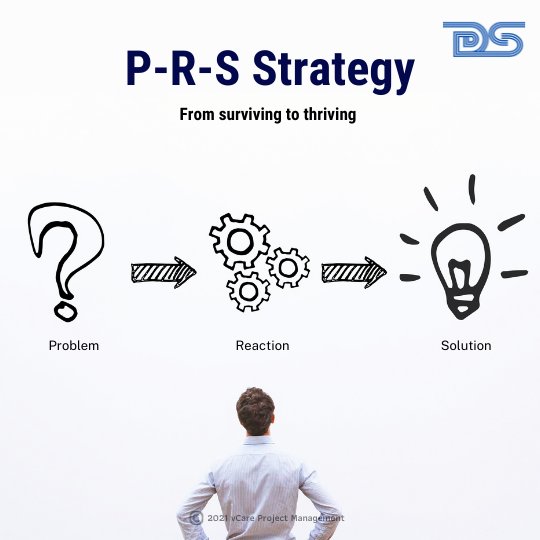
P-R-S strategy
The “What Next?” Approach
Oprah Winfrey Quotes, “Don’t worry about being successful but work toward being significant, and the success will naturally follow.”
“What Next” is a focused and futuristic approach by asking certain simplified questions to yourself and finding the best solutions to your problems during uncertainty. The list of questions given below varies individually, and you can frame “What Next Questions” depending upon your scenario. It is a self-consciousness assessment, where you will be the learner and solution provider for your wellbeing. It enables us to derail faulty thinking where we make decisions that our future selves so often later regret. I am trying to share a common template that could be useful for all.
Q1. What next to make my life better than it was before?
Q2. What next steps should I take to make progress in my professional career?
Q3. What next specific outcome you’re seeking?
Q4. What next critical behavioral change you want to do with?
Q5. What next set of trade-offs am I going to make both on the personal and professional front?
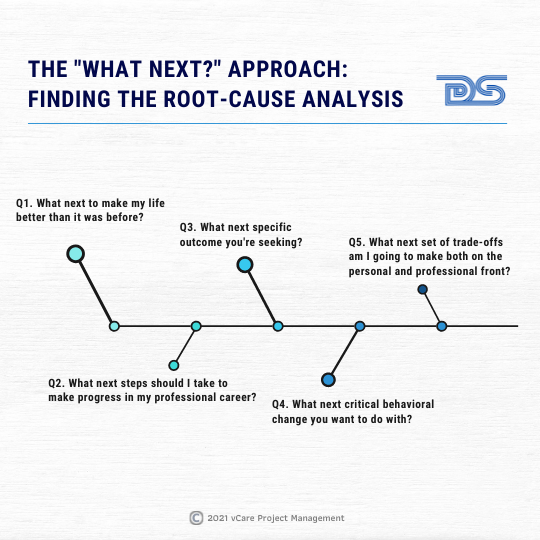
The “What Next?” Approach: Finding the Root-Cause Analysis
Current Self vs. Future Self
Einstein quotes, “Imagination is more important than knowledge.”
Imagination design your future self. Your current self creates a fixed mindset, content with whatever status you are in and stopping the roadmap for achievement. Future self generates a growth mindset and pushes us to move forward towards our goal. An uncertain future breaks you apart emotionally and behaviourally, which impacts your mindset. It ultimately leads you to cognitive dissonance, which refers to a situation used to create mental discomfort that results from holding two conflicting beliefs, values, or attitudes. We all need to break these silos within ourselves.
Empathy not Sympathy

Empathy not Sympathy
My caring for self is caring for other people. That’s what we need to establish in ourselves. Sympathy as a common feeling does not give us positive outcomes, but empathy bridges the negativity gap. Renowned psychologists Daniel Goleman and Paul Ekman have identified three components of empathy: Cognitive, Emotional, and Compassionate. So put it together, we can be mentally strong, emotionally stable, and compassionate towards the family and people we work with. Empathy helps us to overcome anxiety, embarrassment, regret, sadness, shame, and stress.
Forward-thinking leaders
Leaders are the pillar of strength to the foundation of an organization. The old school of leadership thoughts is diminishing and has created a “Leadership Vacuum.” This vacuum can be fulfilled only by forward-thinking leaders who think beyond growth by understanding the good and bad corporate world that is in place. These leaders are empathetic and have a transparent working model put in place. They connect, collaborate, and create a cohesive ecosystem for the employees to achieve their vision and goals. The whole world is filled with uncertainty, and there is no certainty that the desired objective can happen or not. Forward-thinking reshapes the decision-making process of uncertain events within the stipulated time, avoiding greater loss to the organization in the future.
Digital Adoption
As we have moved from industrial evolution to digital evolution, it is a fast-paced movement that professionals need to sync with adaptability. Until March 2020, being an individual traveling worldwide for my training programs, COVID-19 had checkmated my plan of action. It directly impacted my business, which forced me to rethink my business model. The change to digital transformation was imminent. We need to change our mindset to move on to adopt digitalization. My shift to online training programs paid dividends. I stress individuals be from the working class or in business, choosing the right tools and team are critical in achieving success despite testing times.
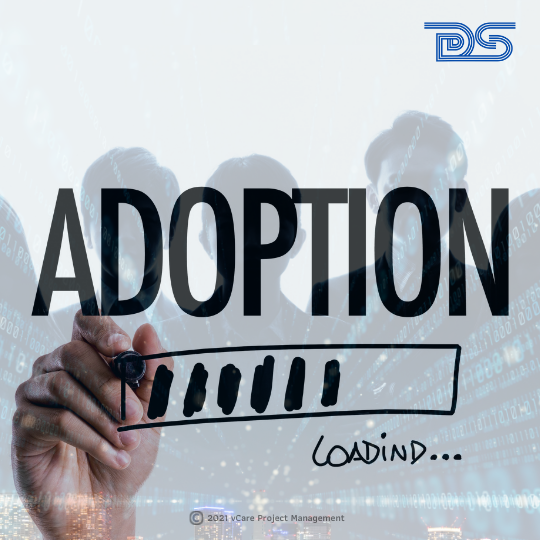
Adoption
Being Physically Active during this Pandemic
Research shows at least 150 mins of physical activity per day is required for a person to stay healthy and live longer. Most people will be spending time with exercise by going to the gym, swimming, running, be in some form of sports activities, etc. unfortunately, COVID-19 has shut down all the avenues due to social distancing. Physical activity depends on the intensity you do, and it is measured based upon it. The intensity ranges from moderate intensity to vigorous intensity, along with muscle and bone strengthening.
Division of Nutrition, Physical Activity, and Obesity, National Center for Chronic Disease Prevention and Health Promotion (CDC-DNPAO), details the Physical Activity for Particular Age Types, which I have shared here for your reference.

Types of Physical Activity
Another interesting measurement is the MET (Metabolic Equivalent of Task) which offers insight into how an individual’s variation in age, height, and body mass may influence the intensity of physical activity.
With the help of these, I am able to ascertain where I stand and plan to be more active and more productive by doing my regular physical activity routine. I got the opportunity to practice Yoga at a young age which led me to be super fit. With mudras, pranayama, and Yoga asanas, I overcame the physical disability (clubfoot) that I was born with. Gradually Yoga has made my mind, body, soul, and my entire lifestyle strong and disciplined. Yoga has created a positive synergy with extraordinary benefits both on the personal and professional front with stress-free life.
Later on, it motivated me to become a Yoga teacher to my community back in Sydney, Australia, through YiPEE (Yoga in Park for Extreme Energy) Yoga from 2011. With YiPEE Yoga, I was able to conduct free yoga sessions during the weekends to the community. In the USA, I plan to organize free community Yoga sessions once all the pandemic-related restrictions are over and people are back to normalcy. But, for now, I continue to practice Yoga indoors and record these sessions that are later shared on my Youtube Channel.
One such session that I plan to do is scheduled the day next to my birthday and during this International Yoga Day, 21st June 2021. The session is intended to communicate the true value of Yoga and realize how individuals can add quality to their mind as Yoga is all about enriching the mind and empowering the body. Yoga is the journey of the self, to the self, through the self.
Join Link: https://bit.ly/3xw4O4u
Date: Monday, 21st June 2021 [Southeast Asia & Oceania],
Sunday, 20th June 2021 [Americas]
Time: 6:00 PM – 7:00 PM (PDT) / 7:00 PM – 8:00 PM (MDT) / 8:00 PM – 9:00 PM (CDT) / 9:00 PM – 10:00 PM (EDT) / 6:30 AM – 7:30 AM (IST) / 9:00 AM – 10:00 AM (SGT/MYT) / 11:00 AM – 12:00 AM (AEST)
You can subscribe to my YouTube Channel to watch all my podcasts and interview sessions with leading project management experts, along with my yoga session videos at https://bit.ly/2NDY8wd
“The Why” and “The How” of my life

Why and How
Tracing back from a humble beginning and reaching the peak of the career path is not an easy achievement. The upward curve of my life is decided by calculated risk, a strong decision-making process, and nurturing from rightful mentors who fined tuned my path towards success. As we live in a pandemic world, and most professionals are into a midlife crisis, it is time to overcome the delusion it creates that pushes us into a panic mode. Midlife crisis is a crisis of identity at the age of 35-40 explored and researched by eminent Swiss psychiatrist Carl Jung and German-American psychologist Erik Erikson, who coined the word “Identity crisis.” On the worrying side, this delusion leads to depression and affects the biological clock of the individual.
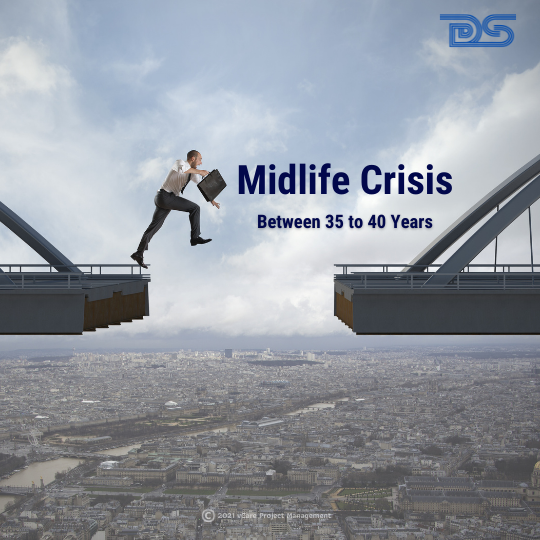
Midlife Crisis
The solution that I adopted is clearing structuring, “The Why” and “The How” of my life. “The Why” streamlined by behavior and attitude, whereas “The How” clearly defines the stages and transition in midlife crisis.
Devising self-structured questions which purely depends on your circumstances and the yardstick you’re in. Here I am sharing one question on each subline;
- Why should I live with a standardized life course?
- How can I live with an extraordinary life course?
Simple but thought-provoking questions that every man and woman would have come across. The anxiety of aging, dissatisfaction with not achieving things, and social instability created by the surroundings take a toll on us personally and professionally. I urged myself not to quit and create an obsessive focus to live an extraordinary life with extraordinary aspirations. That obsessive focus should be on what you can control and not on things you can’t control. The critical aspect is to strike a balance between family and network. I created a cluster pool of networks during my migration to Australia, which stabilized my way of living.

Persevere
Perseverance is one of the greatest skills you can develop during this crisis. First, you have to decide to put yourself in the category you strive for, either a standardized life course or an extraordinary life course. I chased for the latter by getting out of my comfort zone as I clearly understood that success is not a comfortable procedure. I envisioned myself getting out of this crisis through better companionship with my family and kids. They are the ones who complement “The Why” and “The How of my Life.”
Organizations ignore the middle-level managers who are profoundly between the ages of 30-35 in the organizational structure. It is the right time to spearhead those people to overcome the delusion created by the midlife crisis by proper people management and engaging them with psychological counseling. Organizations need to revisit their handling of human resources by taking steps to create work-life integration rather than work-life balance. We can’t regret losing talented professionals in that time zone. “People Value” should outweigh “Profit Value.” Let’s create a “Happiness Greenhouse” and overcome this together.
At vCare Project Management, I train individuals to be resilient project-program-portfolio management professionals and achieve success in the time-intense examinations required to obtain the most elusive advanced PMI certifications, viz. the PgMP® and PfMP®. Through my systemic approach, I unleash their full potential, enabling them to turn their aspirations into reality. As on 7th June 2021, Out of 3660 PgMP®s across the globe, 330 are my students spread across 46 countries. As on 6th June 2021, out of 1106 PfMP®s across the globe, 65 are my students who have empowered me with a 100% success rate.
If I can do it, sure can you.
Inspire yourself, and Inspire your surroundings.
Let the change begin from today!!!
Working Together For Success!!!

























Recent Comments